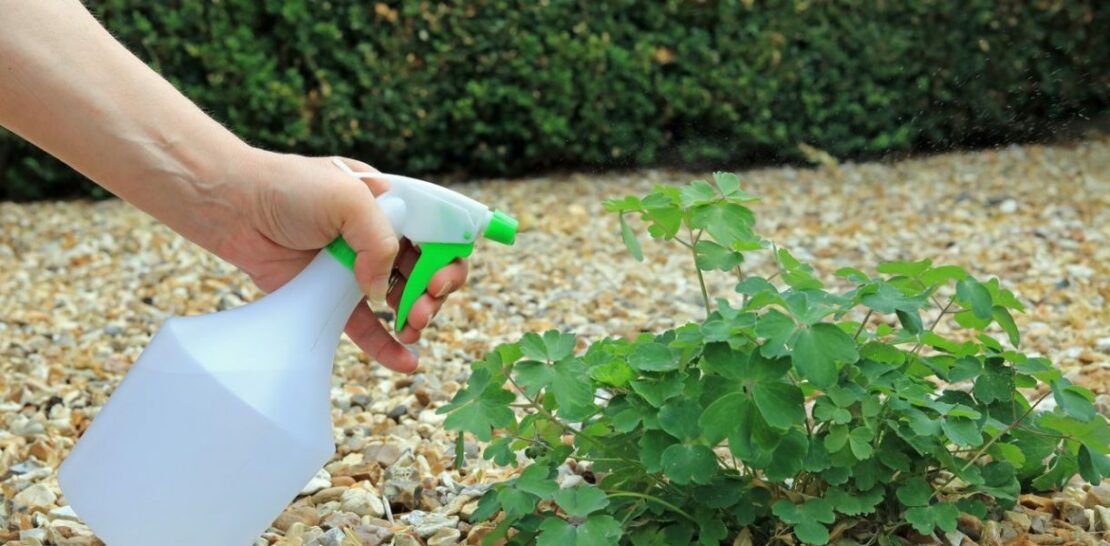Welcome to the comprehensive guide on crafting the perfect homemade white vinegar weedkiller that is not only effective but also environmentally friendly.
This article will unravel the secrets behind the powerful combination of white vinegar and other natural ingredients, providing you with a potent, yet safe, alternative to chemical weedkillers.
So, join us on this exciting journey towards a healthier, more natural garden!
The Science Behind White Vinegar as a Weedkiller
Before diving into the extraordinary recipe, it is crucial to understand the science that makes white vinegar an effective weapon against weeds.
White vinegar, or acetic acid, is a natural substance derived from the fermentation of ethanol. Its acidic nature plays a significant role in its weedkilling properties. When applied to plant tissues, white vinegar effectively dissolves the cell membranes of the weeds, leading to rapid desiccation and death. The higher the concentration of acetic acid, the more potent the weedkiller effect. However, keep in mind that a higher concentration also increases the risk of harming desirable plants, so it is crucial to strike the right balance.
There are several factors to consider while using white vinegar as a weedkiller:
- Concentration: As mentioned earlier, a higher concentration of acetic acid yields a more potent weedkiller. Household white vinegar typically contains 5-6% acetic acid, while horticultural vinegar can contain up to 20%. For most home gardening purposes, a 5-6% concentration is sufficient.
- Application timing: White vinegar is a non-selective weedkiller, meaning it can harm both weeds and desirable plants. To minimize the risk of damaging your cherished plants, it is essential to apply the vinegar solution on a sunny day when the weeds are actively growing. This ensures the rapid absorption of vinegar by the weeds and reduces the chances of it affecting your precious plants.
- Reapplication: Persistent and deep-rooted weeds may require multiple applications of white vinegar before they are eradicated. Patience and consistency are vital when employing this natural weedkiller.
Introducing the Magical Ingredients for the Ultimate White Vinegar Weedkiller Recipe
Now that you have learned the science behind white vinegar’s weedkilling prowess, it is time to discover the magical ingredients that will transform it into an unbeatable natural weedkiller. This recipe combines the unique properties of various natural substances, resulting in a powerful, eco-friendly solution that will leave your garden free from unwanted vegetation.
- White vinegar: The star of the show, white vinegar acts as the primary weedkiller agent in this recipe. As mentioned earlier, opt for a concentration of 5-6% for optimal results.
- Epsom salt: Epsom salt, or magnesium sulfate, is a naturally occurring mineral compound that adds an extra punch to the weedkiller. When combined with white vinegar, Epsom salt works effectively to dehydrate the weeds, leading to their swift demise.
- Liquid dish soap: Dish soap may seem like an odd addition to a weedkiller recipe, but it serves a vital purpose. The soap acts as a surfactant, breaking down the waxy layer on the weed’s leaves and allowing the vinegar and salt to penetrate the plant tissue more effectively.
- Essential oils (optional): While not crucial to the weedkilling process, adding essential oils to the recipe can provide additional benefits. Some essential oils, such as clove, cinnamon, and peppermint, have been shown to possess natural herbicidal properties. Moreover, their pleasant scents help mask the smell of vinegar, making the application process more enjoyable.
Step-by-Step Guide to Crafting the Perfect Homemade White Vinegar Weedkiller
With the essential ingredients in hand, you are now ready to create your very own homemade white vinegar weedkiller. Follow these simple steps to ensure a potent, eco-friendly solution that will rid your garden of pesky weeds:
- Gather your ingredients: You will need the following amounts for a standard batch of weedkiller:
- 1 gallon of white vinegar (5-6% concentration)
- 2 cups of Epsom salt
- ½ cup of liquid dish soap
- 15-20 drops of essential oils (optional)
- Mix the ingredients: In a large container, combine the white vinegar and Epsom salt. Stir the mixture well to ensure that the salt dissolves completely. Next, add the liquid dish soap and mix gently to avoid creating too many suds. If you have opted to include essential oils, add them at this stage and stir the concoction once more.
- Transfer the weedkiller to a spray bottle: Carefully pour the mixture into a spray bottle or garden sprayer, making sure to avoid spillage. If using a garden sprayer, ensure that it is compatible with vinegar-based solutions to prevent corrosion or damage to the equipment.
- Apply the weedkiller to the weeds: Choose a sunny day when the weeds are actively growing to spray the solution directly onto the undesired plants. Be cautious to avoid misting the surrounding desirable plants, as the weedkiller is non-selective and can harm them as well. It is recommended to use a piece of cardboard or plastic to shield your precious plants from the spray.
- Monitor the results: Observe the treated weeds over the next few days to assess the weedkiller’s effectiveness. You should notice the weeds beginning to wilt and die within 24-48 hours. If some stubborn weeds persist, reapply the solution as needed until they are eradicated.
Avoiding Common Pitfalls and Maximizing the Efficiency of Your Homemade White Vinegar Weedkiller
While crafting and using a homemade white vinegar weedkiller may seem straightforward, there are several pitfalls that gardeners should be aware of to ensure optimal results. By avoiding these common mistakes and following best practices, you can maximize the efficiency of your eco-friendly weedkiller and achieve a vibrant, weed-free garden.
Do not dilute the vinegar: Resist the temptation to dilute the white vinegar with water, as doing so will significantly reduce its weedkilling effectiveness. Instead, use the vinegar at its full strength (5-6% concentration) to ensure optimal results.
Apply the weedkiller on a sunny day: As previously mentioned, applying the vinegar solution on a sunny day when the weeds are actively growing is crucial to its effectiveness. This increases the likelihood of rapid absorption by the weeds and reduces the chances of the weedkiller harming your desirable plants.
Be patient and persistent: Some deep-rooted or persistent weeds may require multiple applications of the white vinegar solution before they are eradicated. Do not be disheartened if the weeds do not die immediately after the first application. Instead, remain patient and consistent in your efforts to ensure a weed-free garden.
Exercise caution around desirable plants: Remember that white vinegar is a non-selective weedkiller and can harm both weeds and desirable plants. Take extra care when spraying the solution to avoid accidentally misting your cherished plants. Use a piece of cardboard or plastic to shield them from the spray, or consider applying the weedkiller with a paintbrush for more precise application in tight spaces.
In conclusion, a homemade white vinegar weedkiller is an effective, eco-friendly solution to managing unwanted weeds in your garden. By understanding the science behind white vinegar’s weedkilling properties and combining it with other potent natural ingredients, you can craft a powerful and safe alternative to chemical weedkillers. With patience, persistence, and adherence to best practices, you can achieve a vibrant, weed-free garden that you can be proud of.




